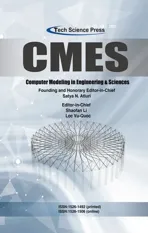Medical Waste Treatment Station Selection Based on Linguistic q-Rung Orthopair Fuzzy Numbers
2021-11-05JieLingXinmeiLiandMingweiLin
Jie Ling,Xinmei Li and Mingwei Lin,⋆
1College of Mathematics and Informatics,Fujian Normal University,Fuzhou,350117,China
2Digital Fujian Internet-of-Things Laboratory of Environmental Monitoring,Fujian Normal University,Fuzhou,350117,China
ABSTRACT During the COVID-19 outbreak,the use of single-use medical supplies increased significantly.It is essential to select suitable sites for establishing medical waste treatment stations.It is a big challenge to solve the medical waste treatment station selection problem due to some conflicting factors.This paper proposes a multi-attribute decision-making(MADM)method based on the partitioned Maclaurin symmetric mean(PMSM)operator.For the medical waste treatment station selection problem,the factors or attributes(these two terms can be interchanged.)in the same clusters are closely related,and the attributes in different clusters have no relationships.The partitioned Maclaurin symmetric mean function(PMSMF)can handle these complex attribute relationships.Hence,we extend the PMSM operator to process the linguistic q-rung orthopair fuzzy numbers(Lq-ROFNs)and propose the linguistic q-rung orthopair fuzzy partitioned Maclaurin symmetric mean(Lq-ROFPMSM)operator and its weighted form(Lq-ROFWPMSM).To reduce the negative impact of unreasonable data on the final output results,we propose the linguistic q-rung orthopair fuzzy partitioned dual Maclaurin symmetric mean(Lq-ROFPDMSM)operator and its weighted form(Lq-ROFWPDMSM).We also discuss the characteristics and typical examples of the above operators.A novel MADM method uses the Lq-ROFWPMSM operator and the Lq-ROFWPDMSM operator to solve the medical waste treatment station selection problem.Finally,the usability and superiority of the proposed method are verified by comparing it with previous methods.
KEYWORDS Medical waste treatment station;linguistic q-rung orthopair fuzzy sets;aggregation operators;partitioned dual maclaurin symmetric mean operators
1 Introduction
The current global public health emergency is the spread of COVID-19 and it has become a serious threat to human health.The rapid increase in the number of infections,coupled with the lack of initial attention by leaders in many countries,has led to COVID-19 becoming a global epidemic.As of mid-February 2021,COVID-19 has affected 185 countries.The cumulative number of confirmed cases of COVID-19 exceeds 100 million and active cases exceed 20 million[1].The number of active cases in each country is shown in Fig.1.
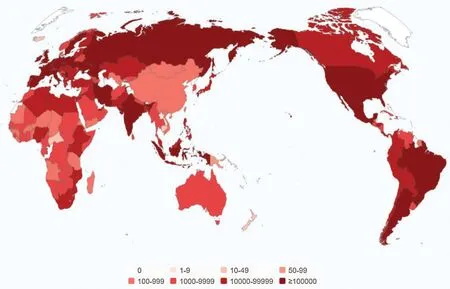
Figure 1:Active cases of COVID-19 in various countries
There are big challenges in controlling and preventing COVID-19 because of its rapid transmission,high infectiousness,and long incubation period.One of the key issues is how to handle medical waste in a rational manner.The reason for this is that with the rapid rise in the number of infections,the generation of medical waste has increased dramatically.Proper disposal of massive medical waste is an important way of preventing secondary transmission of COVID-19[2].In addition,most medical wastes are the plastic products,which can also cause environmental pollution if not handled properly.In order to solve the above problems,medical wastes need to be recycled and treated.The location of medical waste treatment stations is one of the key aspects[3,4].
Siting a suitable medical waste treatment station requires multiple considerations of economic,social,and environmental factors.Determining the best site is a challenge,as each station has its own advantages and disadvantages.Improper siting of the medical waste treatment stations will have the long-term negative impacts on environmental development and economic growth.Therefore,multi-attribute decision-making(MADM)can be used to solve the above siting problem[5,6].The general process of the MADM method is to analyze the selection attributes and determine the weights of their importance.Then,an evaluation matrix is generated,and the score of each alternative is calculated and ranked.
To solve the medical waste station selection problem,this paper proposes a novel MADM method based on the partitioned Maclaurin symmetric mean(PMSM)operator.Because of the complexity of the medical waste station selection problem,in this paper,we evaluate the alternatives of medical waste stations in the form of linguistic q-rung orthopair fuzzy numbers(Lq-ROFNs),which are capable of handling the complex and fuzzy information[7,8].Through analyzing the considered attributes of medical waste stations,we can find that attributes in the same clusters are closely related,while attributes in different clusters did not have the relationship.Therefore,in this paper,we use the PMSM operator to aggregate the evaluation information.It can capture the correlation among attributes in the same clusters and can reflect the independence among attributes in different clusters[9,10].Meanwhile,the evaluation information provided by the decision-makers may contain unreasonable values.We further use the partitioned dual MSM(PDMSM)operator to process the evaluation information.It can reduce the influence of unreasonable evaluation values on the aggregation results.
The other sections of this paper are briefly described as follows.Section 2 is a literature review,which reviews the knowledge of fuzzy sets and MADM methods.Section 3 gives a brief introduction to relevant basic concepts,including the definition and properties of the Lq-ROFSs and the PMSM operators.Section 4 gives the definitions of the Lq-ROFPMSM and Lq-ROFWPMSM operators,and analyzes their relevant properties and typical examples.In Section 5,we define the Lq-ROFPDMSM and Lq-ROFWPDMSM operators and analyze their related features.A novel MADM method using the Lq-ROFWPMSM and Lq-ROFWPDMSM operators is proposed in Section 6.Section 7 verifies the reliability and superiority of the model in this paper by an application example.The last section is an analysis and conclusion of this paper.
2 Literature Review
As an important part of modern decision theory,MADM has been widely applied in various fields of engineering,business activities,and government actions.The purpose of MADM is to evaluate alternatives based on the evaluation information provided by the decision makers.The optimal solution is then selected based on the ranking results.Early decision-making problems usually use crisp numbers to evaluate objects.However,evaluation information can be fuzzy and uncertain as the complexity of the decision problems increases.It is difficult to accurately represent evaluation information with only crisp numbers.Therefore,Zadeh[11]proposed the fuzzy sets(FSs)theory,which uses the membership degree(MD)to describe the support degree of the decision makers.By extending the classical FSs theory,Atanassov[12]proposed the intuitionistic fuzzy sets(IFSs).It describes the degree of opposition of decision makers through the nonmembership degree(NMD).The sum of MDαand NMDβis not greater than one[12,13].IFSs can describe the degree of support,opposition,and hesitation for evaluating objects[14].Thus,it has attracted a large number of scholars[15–19].However,the MDαand the NMDβof IFSs must satisfy the constraint condition ofα+β≤1,which makes the representation of evaluation information narrow.Therefore,Yager extended the IFSs and proposed the theory of Pythagorean fuzzy sets(PFSs)[20,21].PFSs also use the MD and NMD to represent evaluation information.However,the sum of the square of MDαand the square of NMDβis not greater than one,i.e.,α2+β2≤1.Therefore,PFSs are more capable of handling fuzzy problems[22–24].Further,Yager proposed the theory of q-rung orthopair fuzzy sets(q-ROFSs)[25].The sum of qth power of MDαand qth power of NMDβis not greater than one,i.e.,αq+βq≤1.Thus,IFSs and PFSs are special forms of q-ROFSs.
In daily life,decision-makers usually use linguistic terms to describe evaluation information[26].For instance,when describing the price of a product,decision-makers often use words such as “high”,“low”,“very high” or “very low”.To model this kind of evaluation information,the fuzzy linguistic methods that are more in line with the grammatical habits of decision makers are proposed by Zadeh[27].Based on the intuitionistic fuzzy sets and linguistic term sets[28],Zhang proposed the concept of linguistic intuitionistic fuzzy set(LIFS)[29].Then,Garg provided the definition of linguistic Pythagorean fuzzy set(LPFS)[30].Linguistic q-rung orthopir fuzzy set(Lq-ROFS)is an extended form of LIFS and LPFS[31].
In the multi-attribute decision making activities,it is a challenge to aggregate the cluttered evaluation information into relatively intuitive data.The aggregation operator is an effective tool to solve the above problem.At present,many research results have been achieved in the aggregation operators.For example,Bonferroni mean(BM)operator[32],power average(PA)operator[33],Hamacher aggregation operator[34],Heronian mean(HM)operator[35],and so on.The Maclaurin symmetric mean(MSM)operator was first introduced by Maclaurin in 1729[36]and then extended by Detemple et al.[37].The MSM operator can capture the correlation among the evaluated information.It can reflect the risk preference of decision-makers during the evaluation.The MSM operator has been concerned by many scholars since it was proposed,and many achievements have been made in both theory and applications[38–40].However,in practical decision problems,the attributes in the evaluation information are not always interrelated.There may be divisions among attributes,which cannot be handled by the MSM operator.To solve this problem,the partitioned MSM(PMSM)operator[41]has been proposed.The PMSM operator can handle the case where there are partitions among attributes.
As the complexity of the decision problem increases,the following situations may occur:1)decision makers may use the linguistic terms to describe the evaluation object;2)due to lack of experience,decision makers may give some evaluation values that are too high or too low.To deal with the above problems,we extend the PMSM operator and the partitioned dual PMSM operator to process Lq-ROFS.Then,we propose the linguistic q-rung orthopair fuzzy partitioned Maclaurin symmetric mean(Lq-ROFPMSM)operator,linguistic q-rung orthopair fuzzy partitioned dual Maclaurin symmetric mean(Lq-ROFPDMSM)operator,and their weighted form(Lq-ROFWPMSM and Lq-ROFWPDMSM).The Lq-ROFPMSM and Lq-ROFPDMSM operators can solve the decision-making problems that the attributes in the same clusters are closely related and the attributes in the different clusters have no relationship.The negative impact of unreasonable values in the evaluation information on the ranking results is also significantly reduced.
3 Preliminaries
In this chapter,will briefly review the definition and characteristics of the linguistic q-round orthopair fuzzy sets(Lq-ROFSs)and the partitioned Maclaurin symmetric mean(PMSM)operators.
3.1 Lq-ROFSs

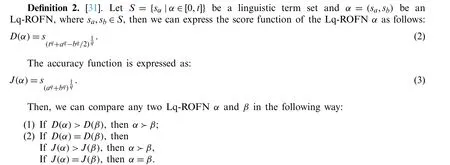
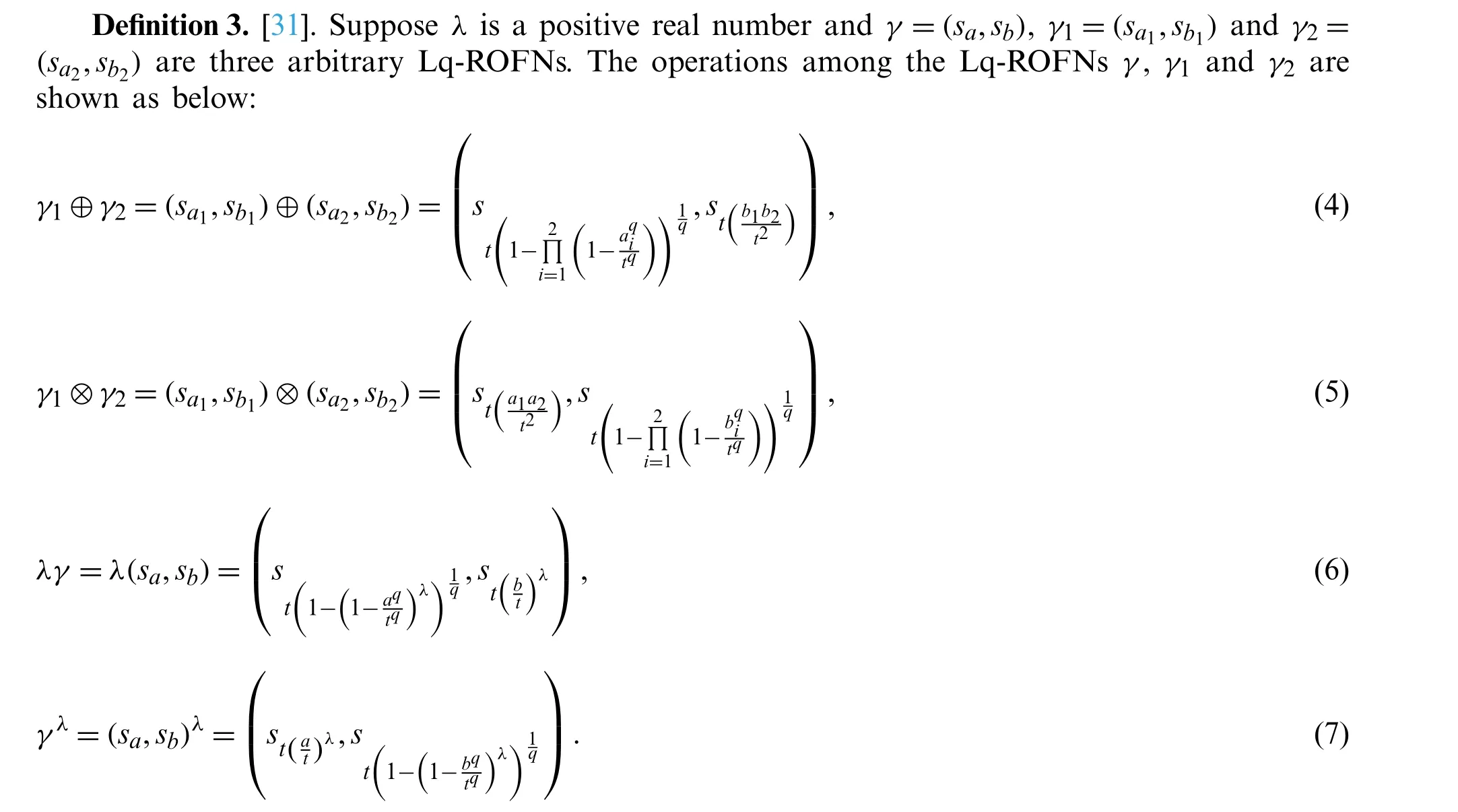
3.2 The PMSM Operator


4 The Proposed Lq-ROFPMSM Operator and Lq-ROFWPMSM Operator
4.1 The Lq-ROFPMSM Operator

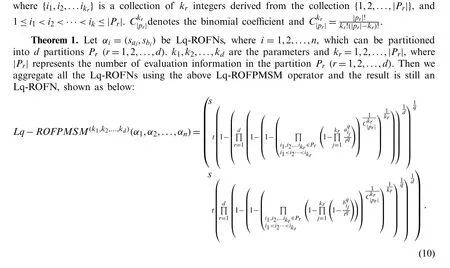
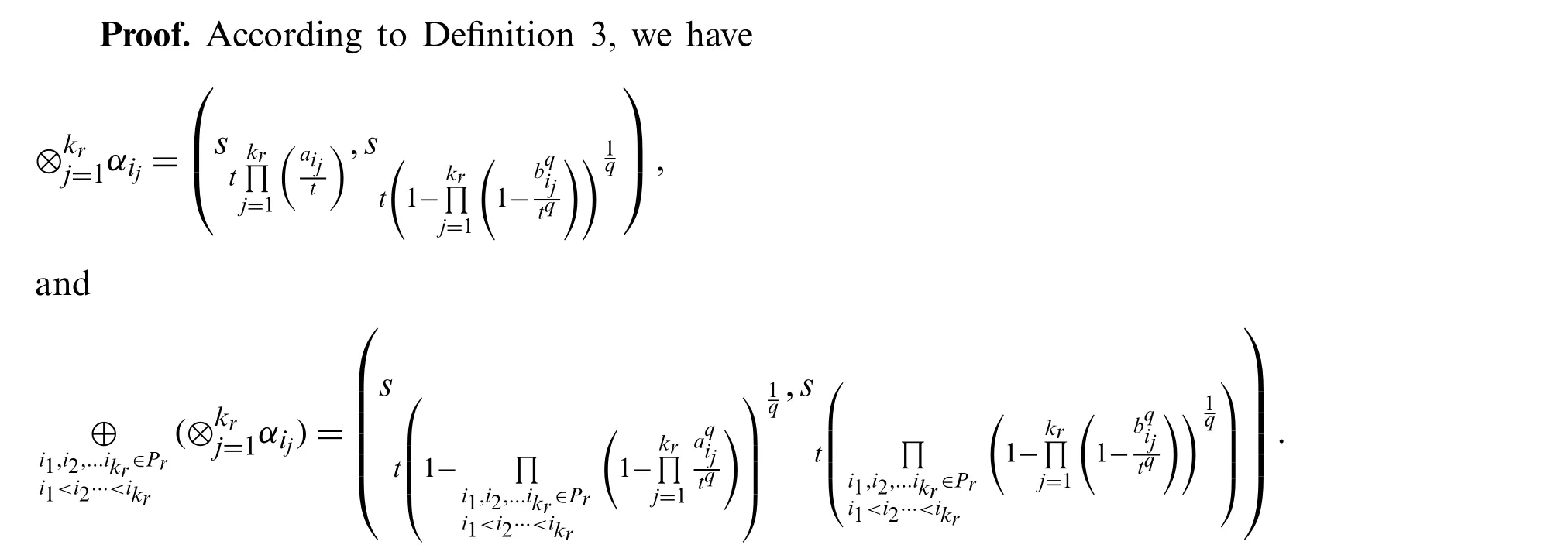
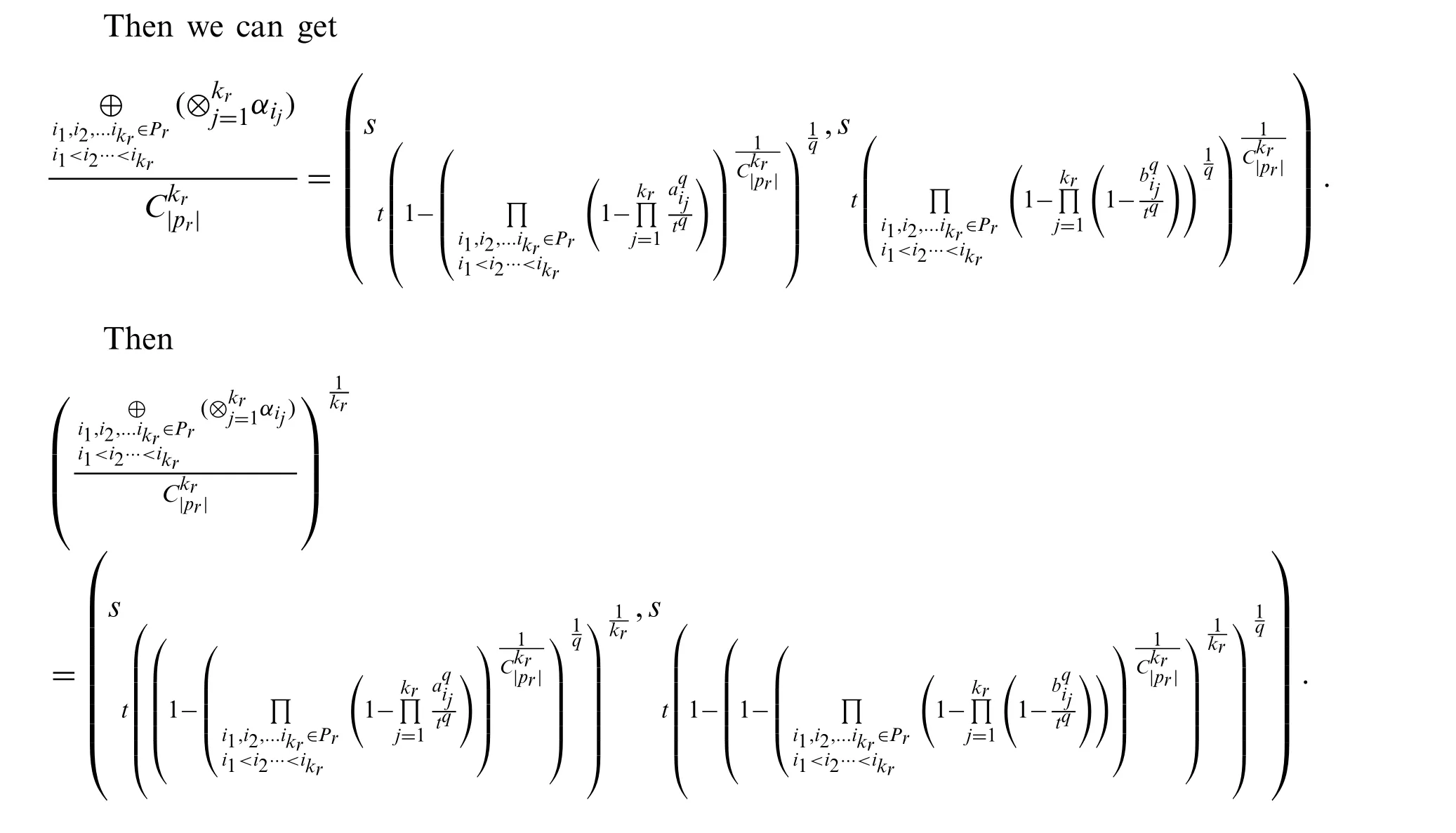
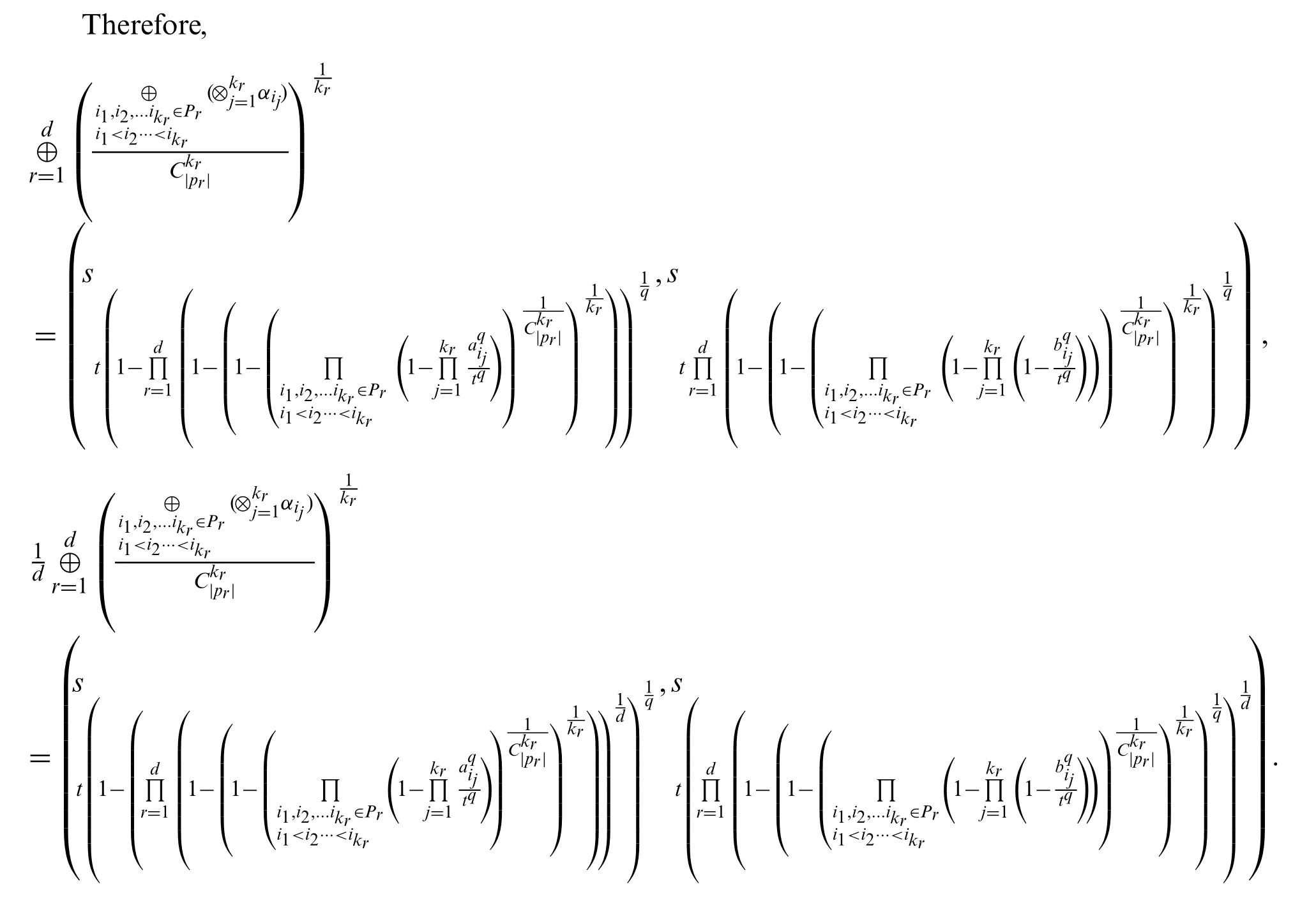
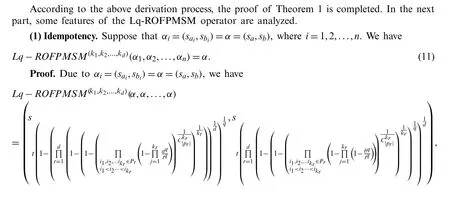
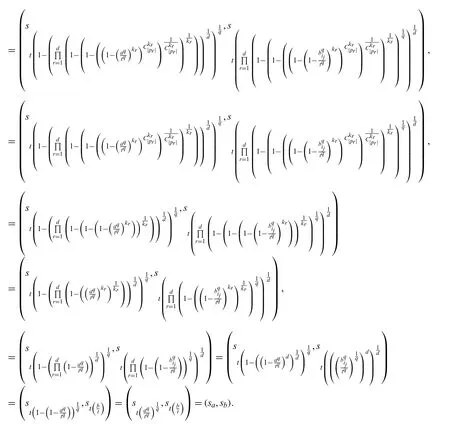


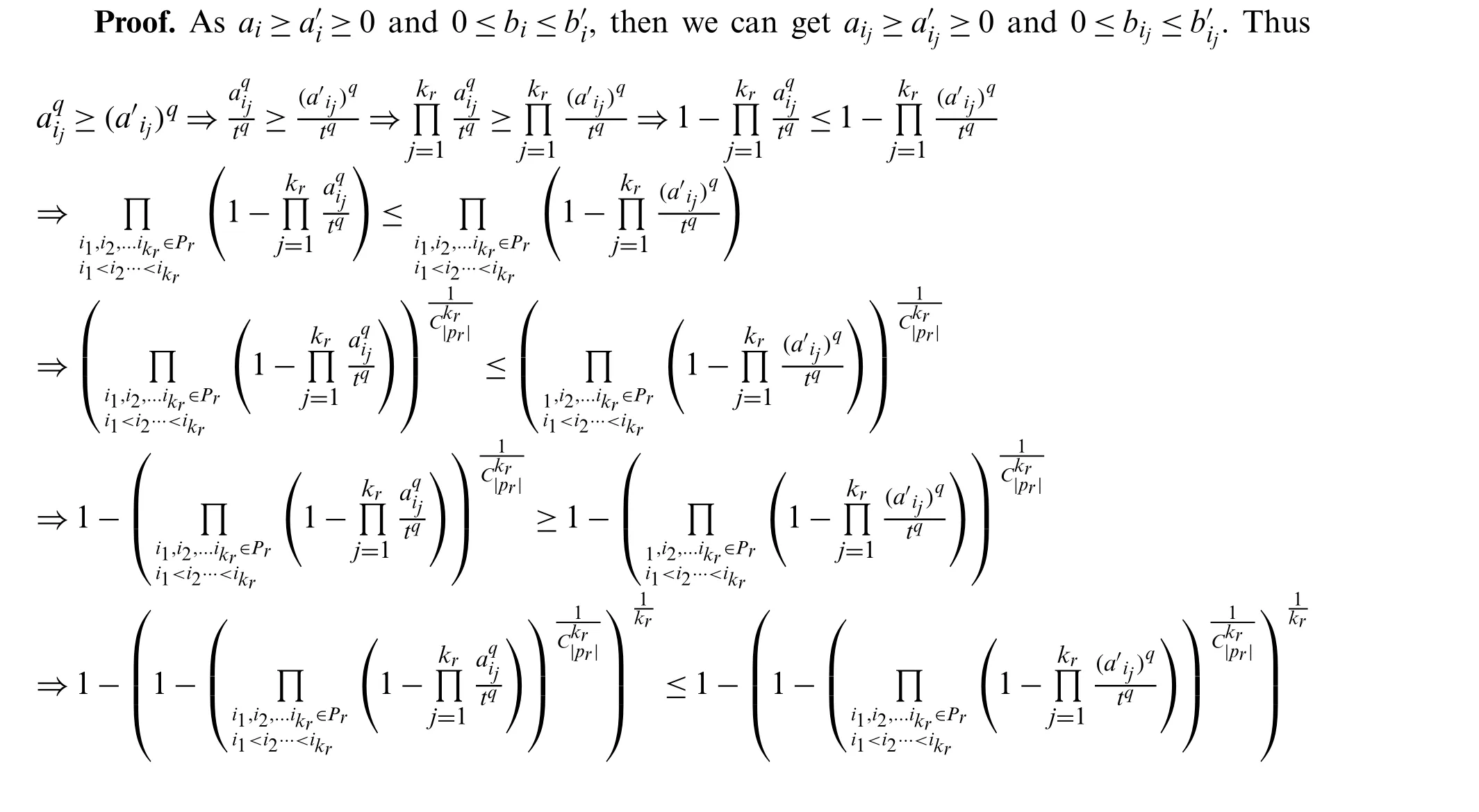
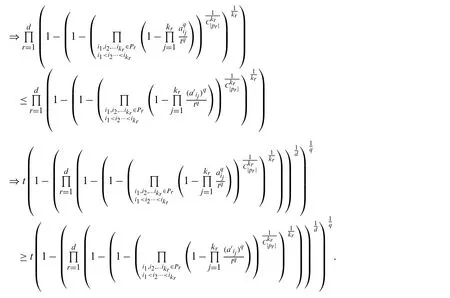
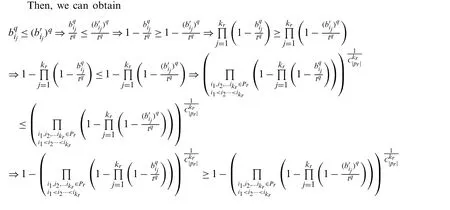
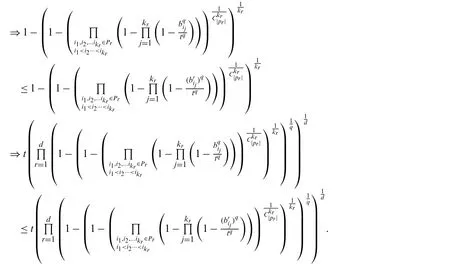
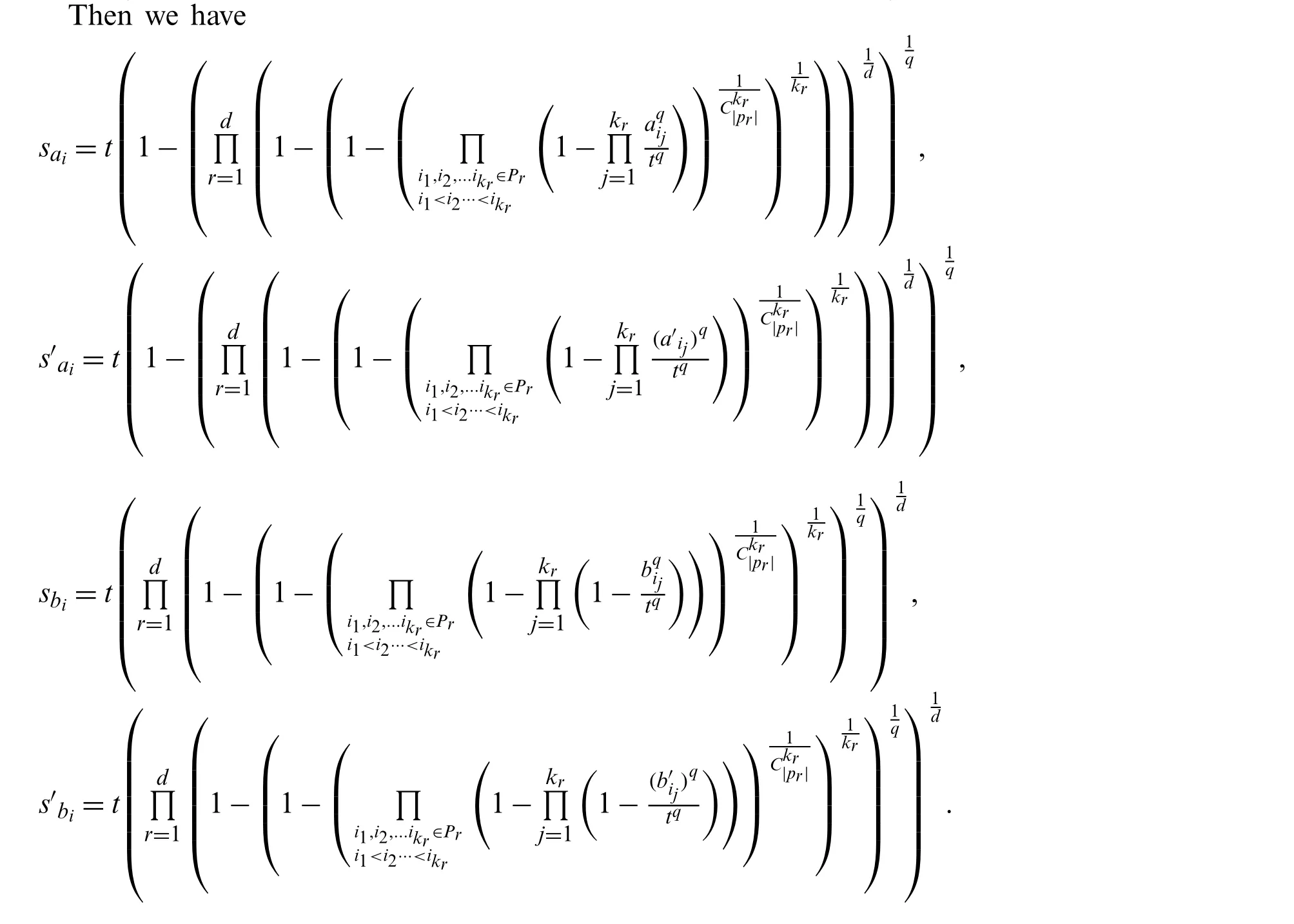
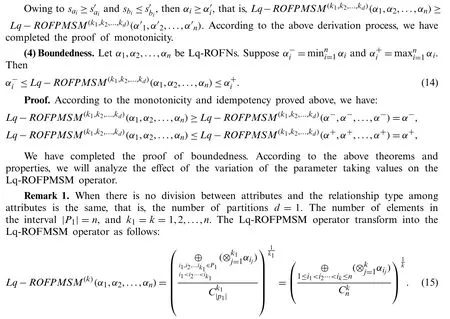
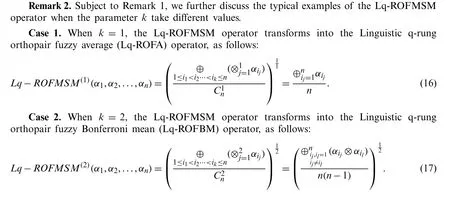

4.2 The Lq-ROFWPMSM Operator

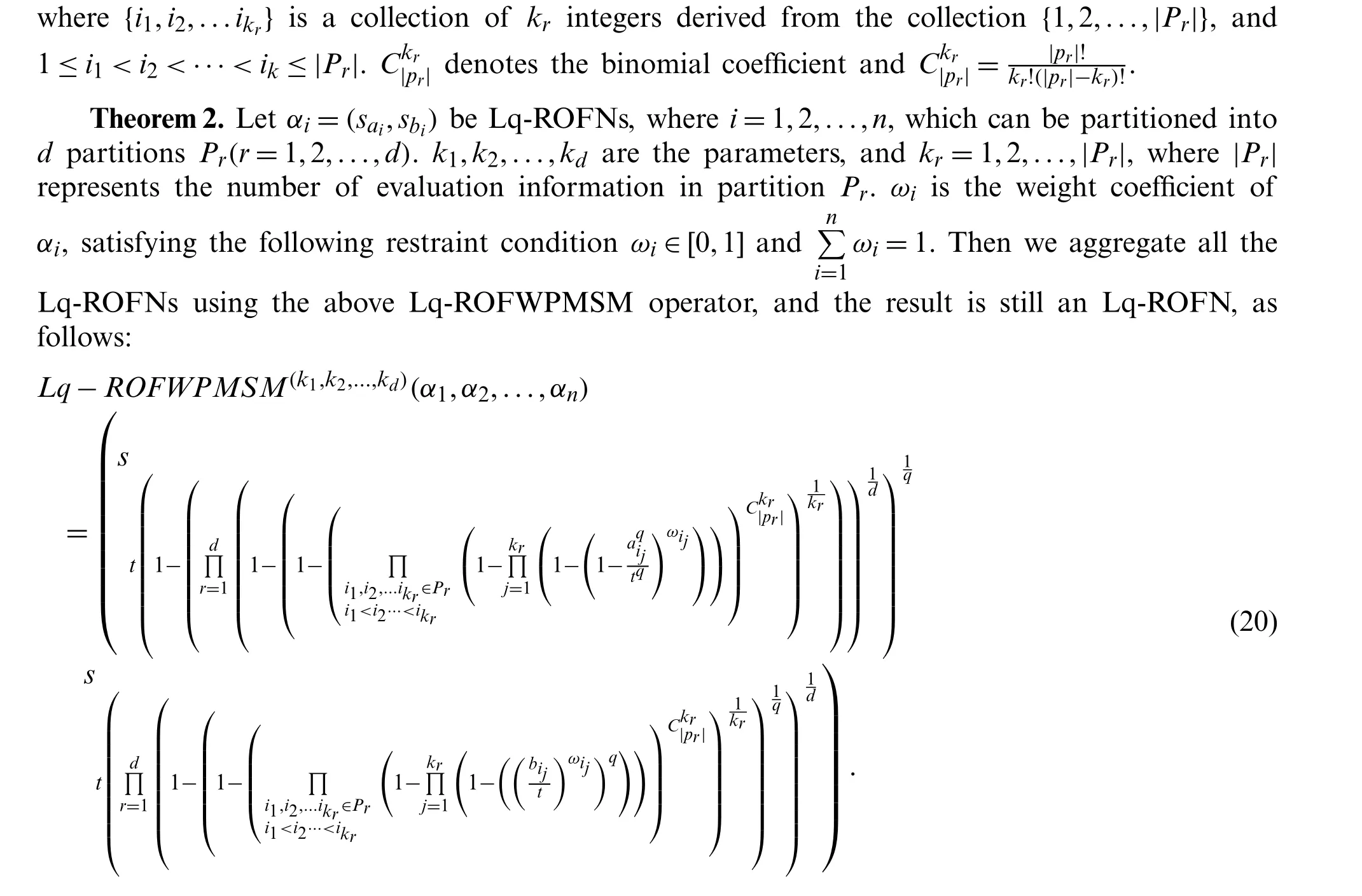
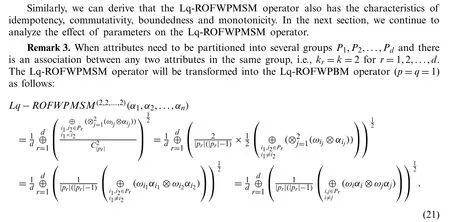
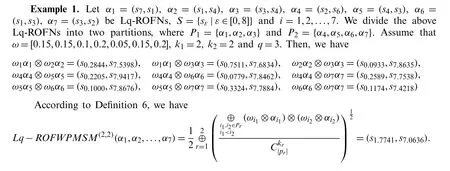
5 The Proposed Lq-ROFPDMSM Operator and Lq-ROFWPDMSM Operator
5.1 The Lq-ROFPDMSM Operator

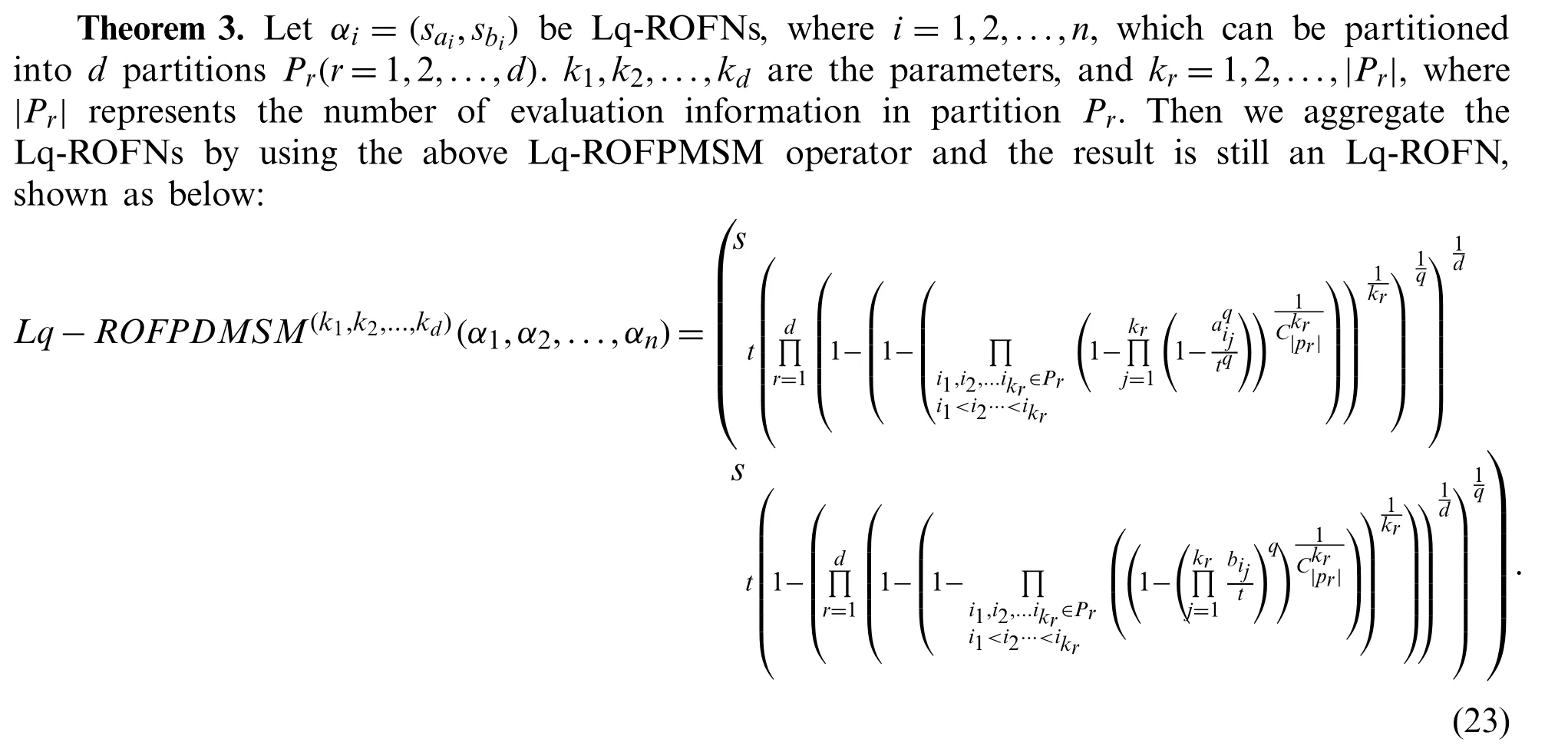
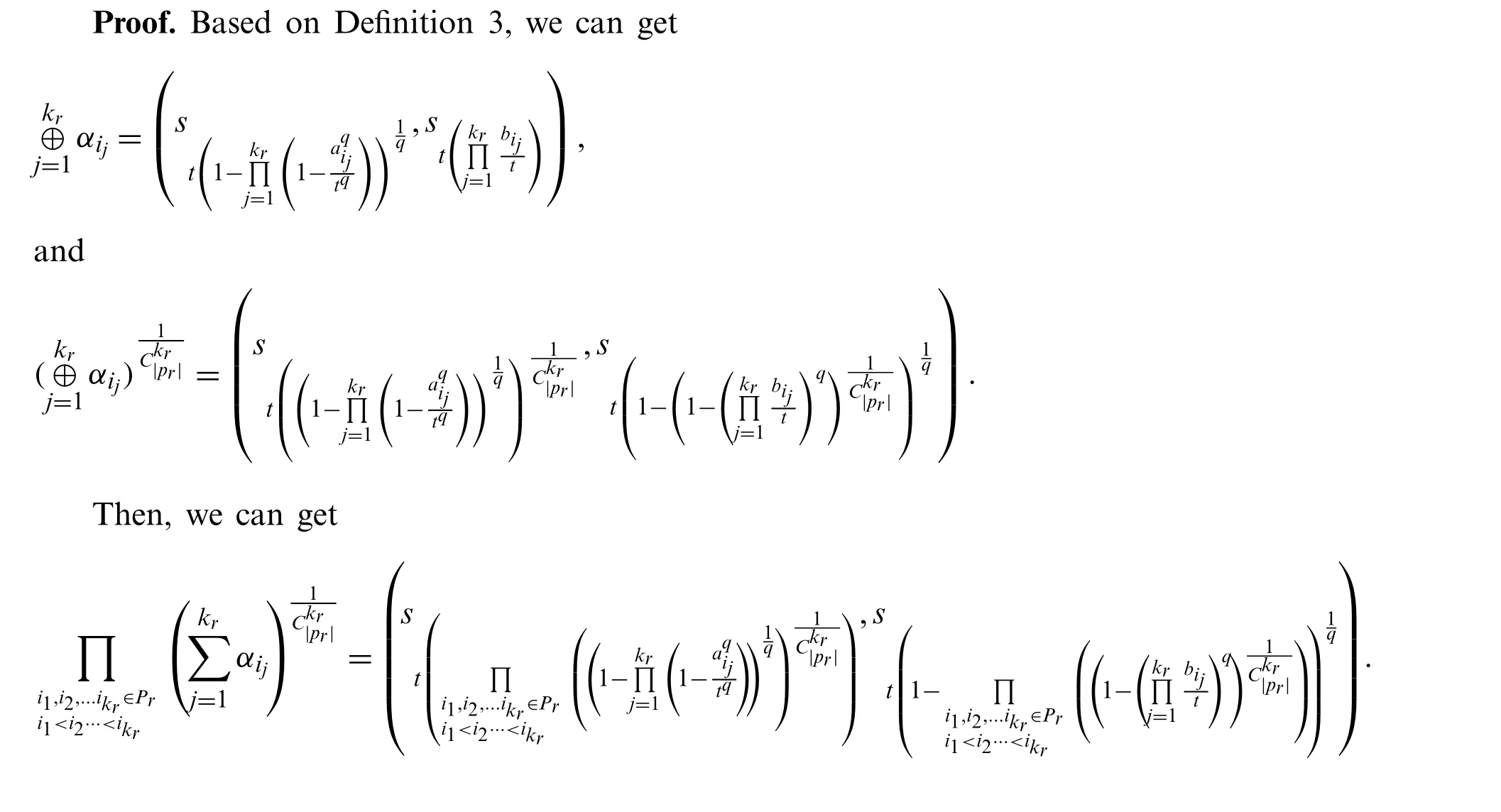
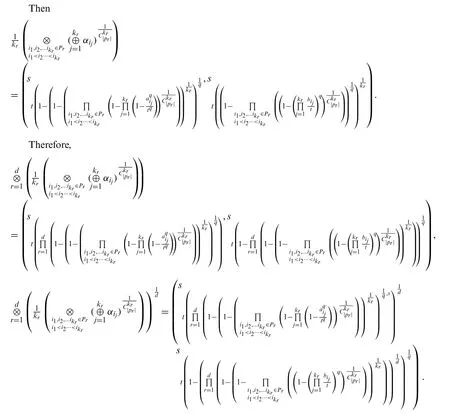

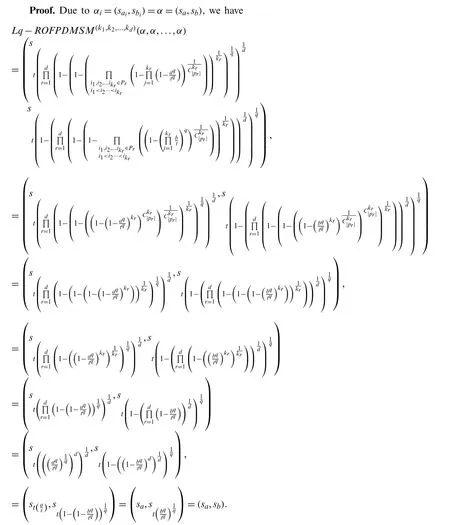

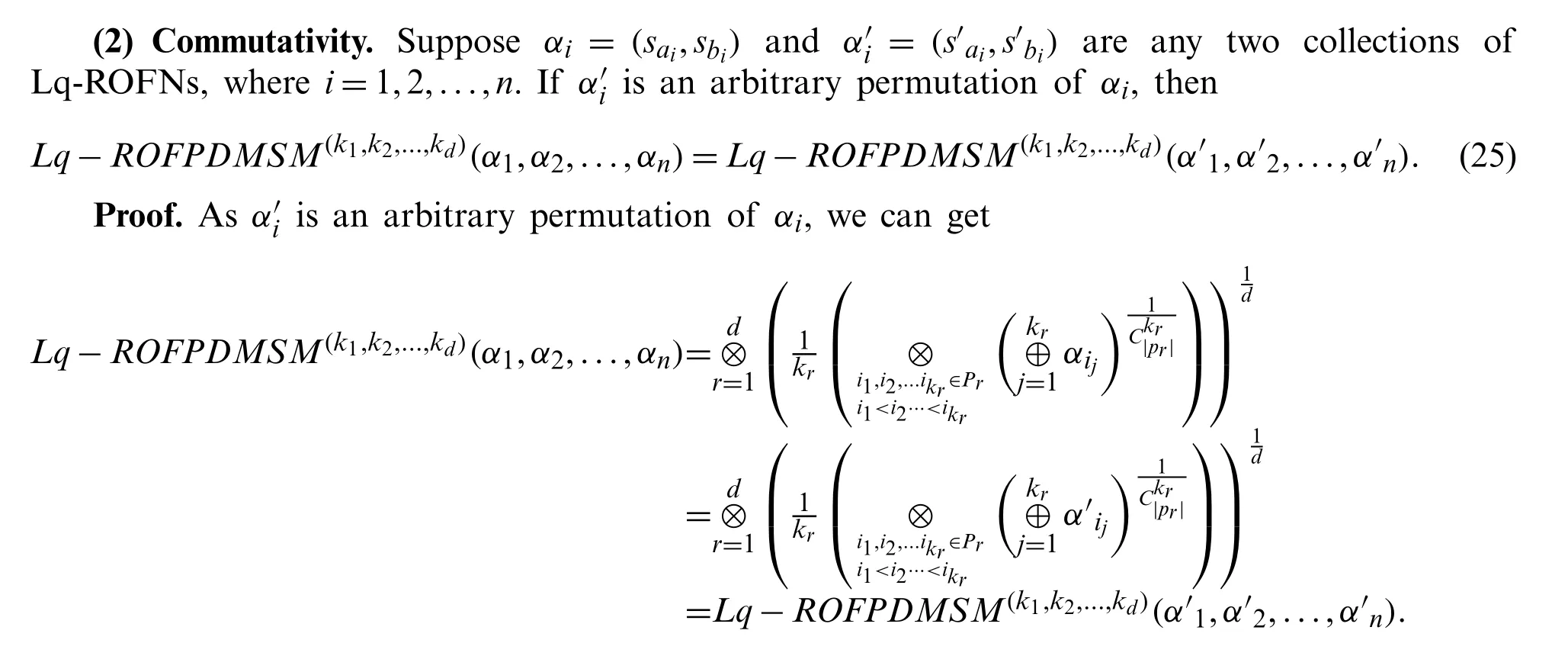
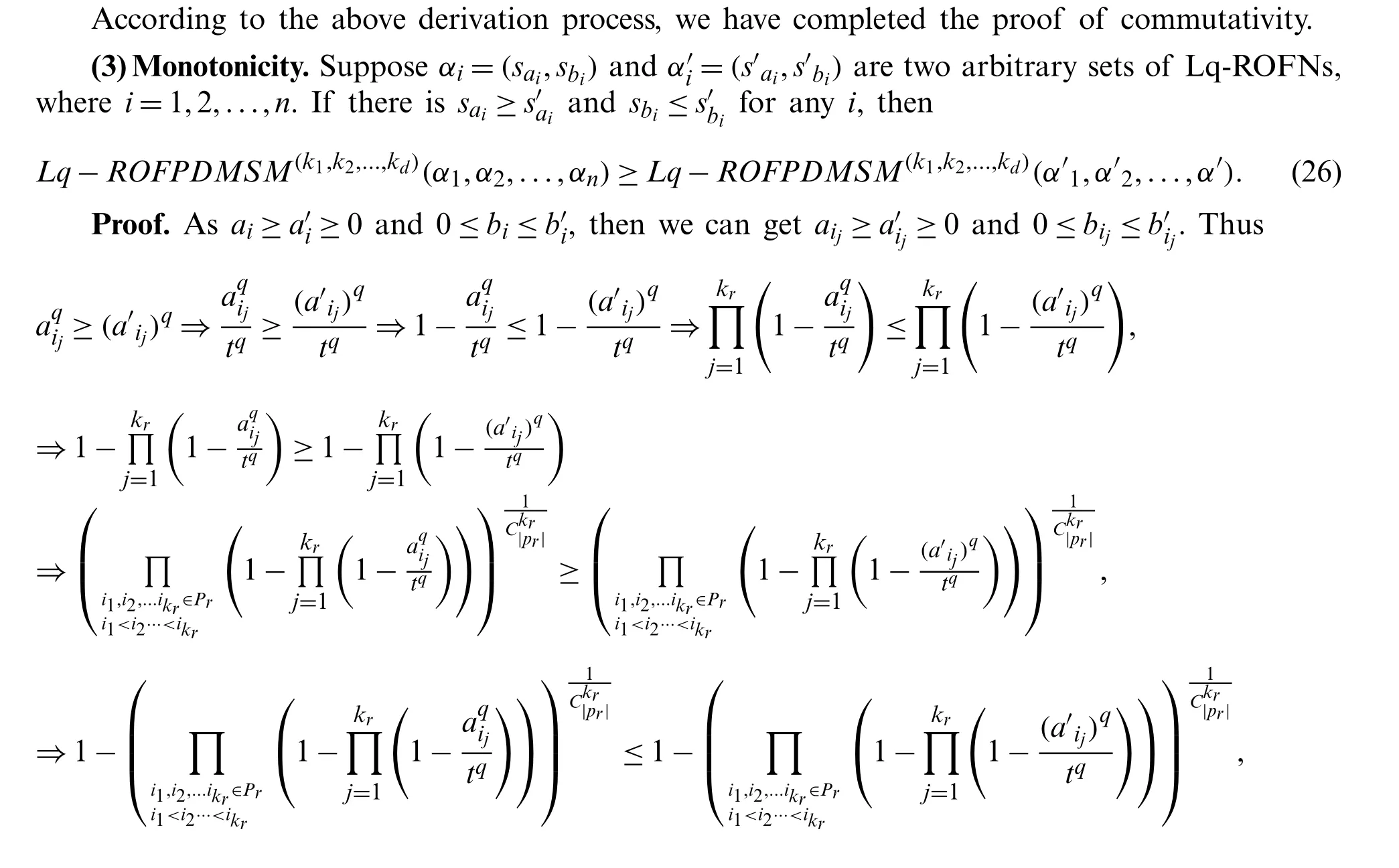
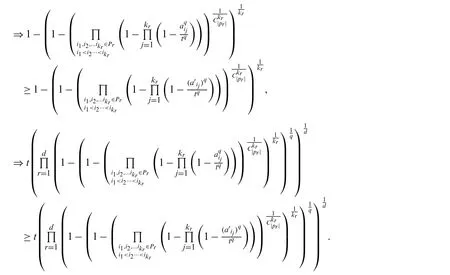
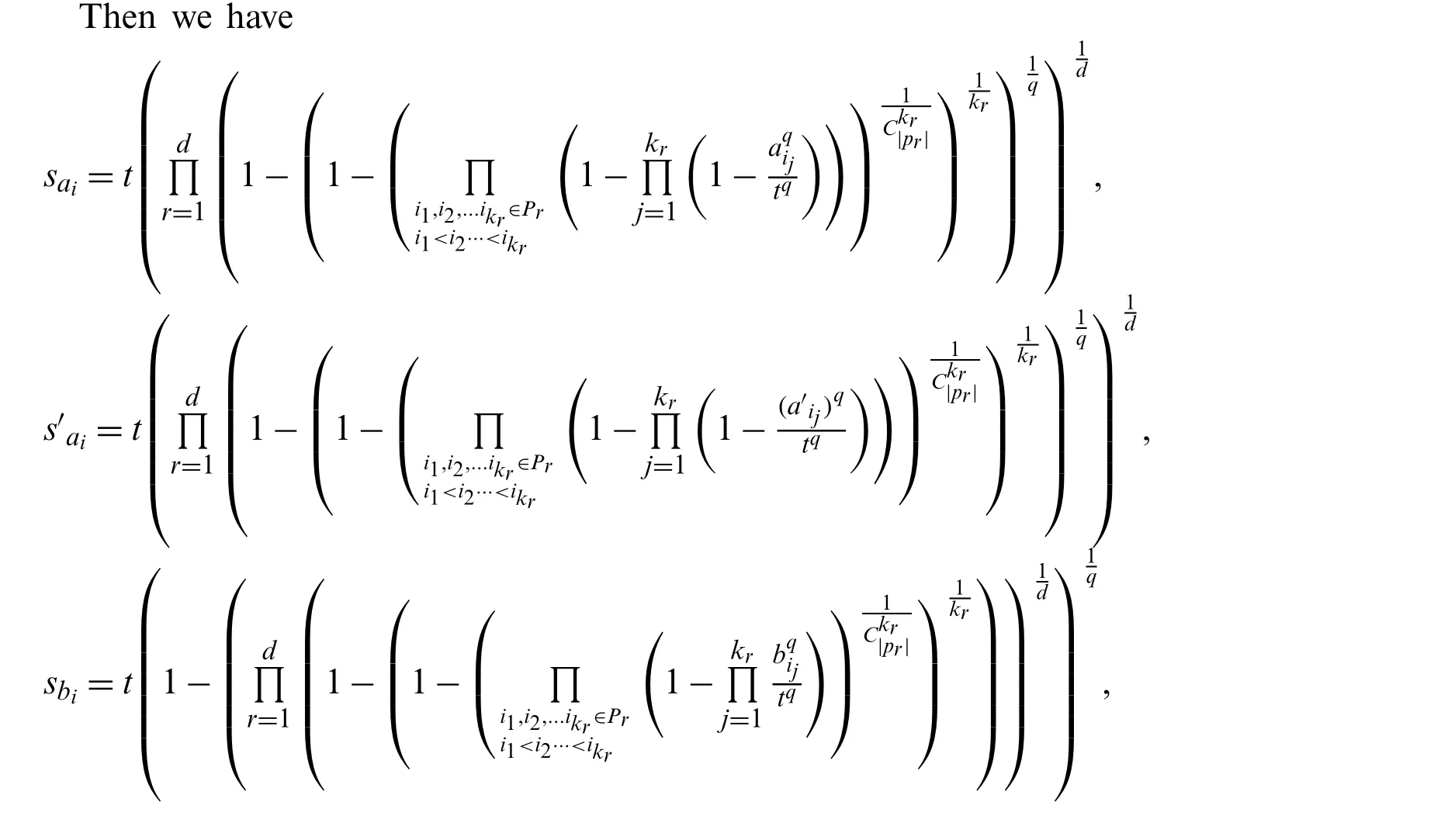
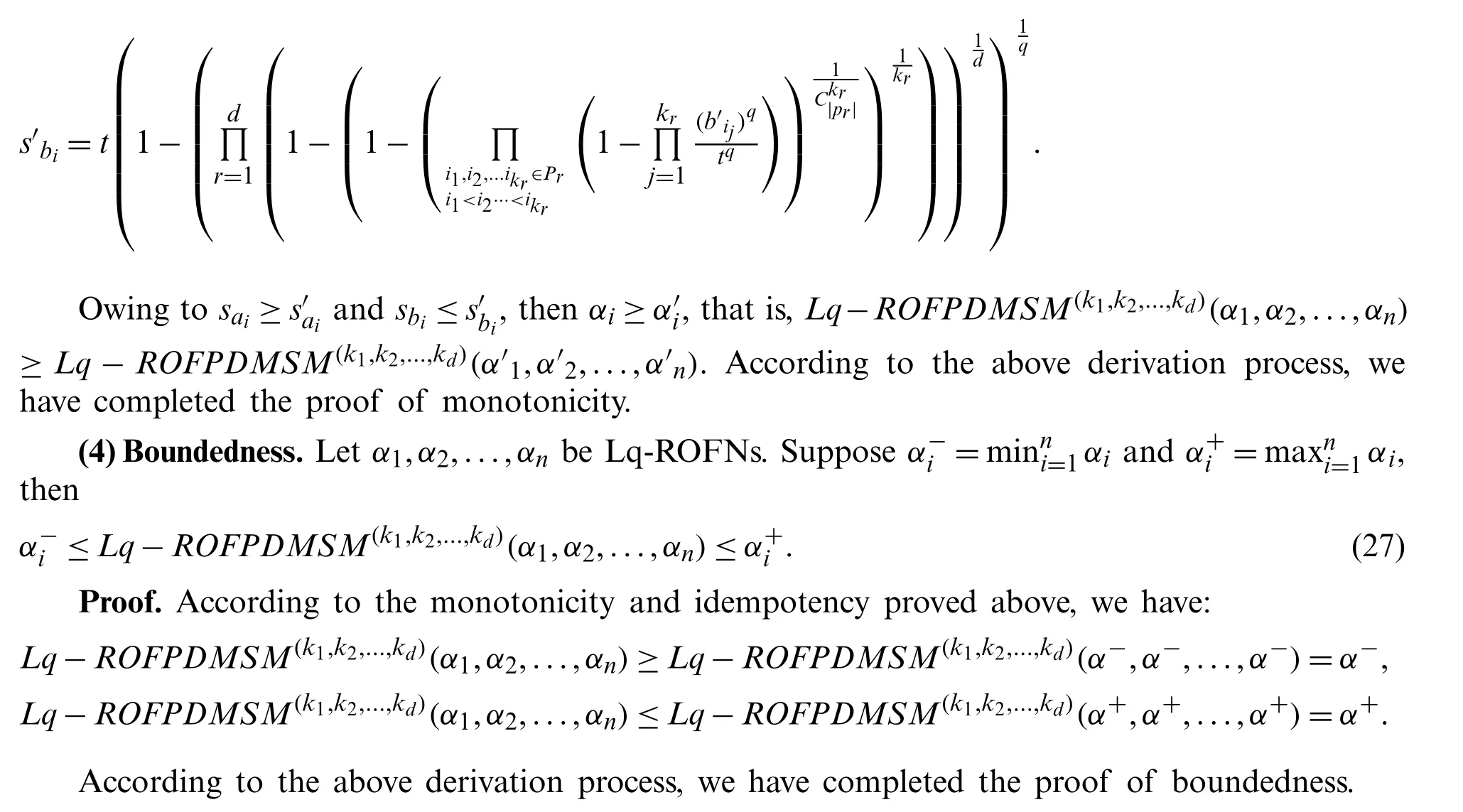
5.2 The Lq-ROFWPDMSM Operator
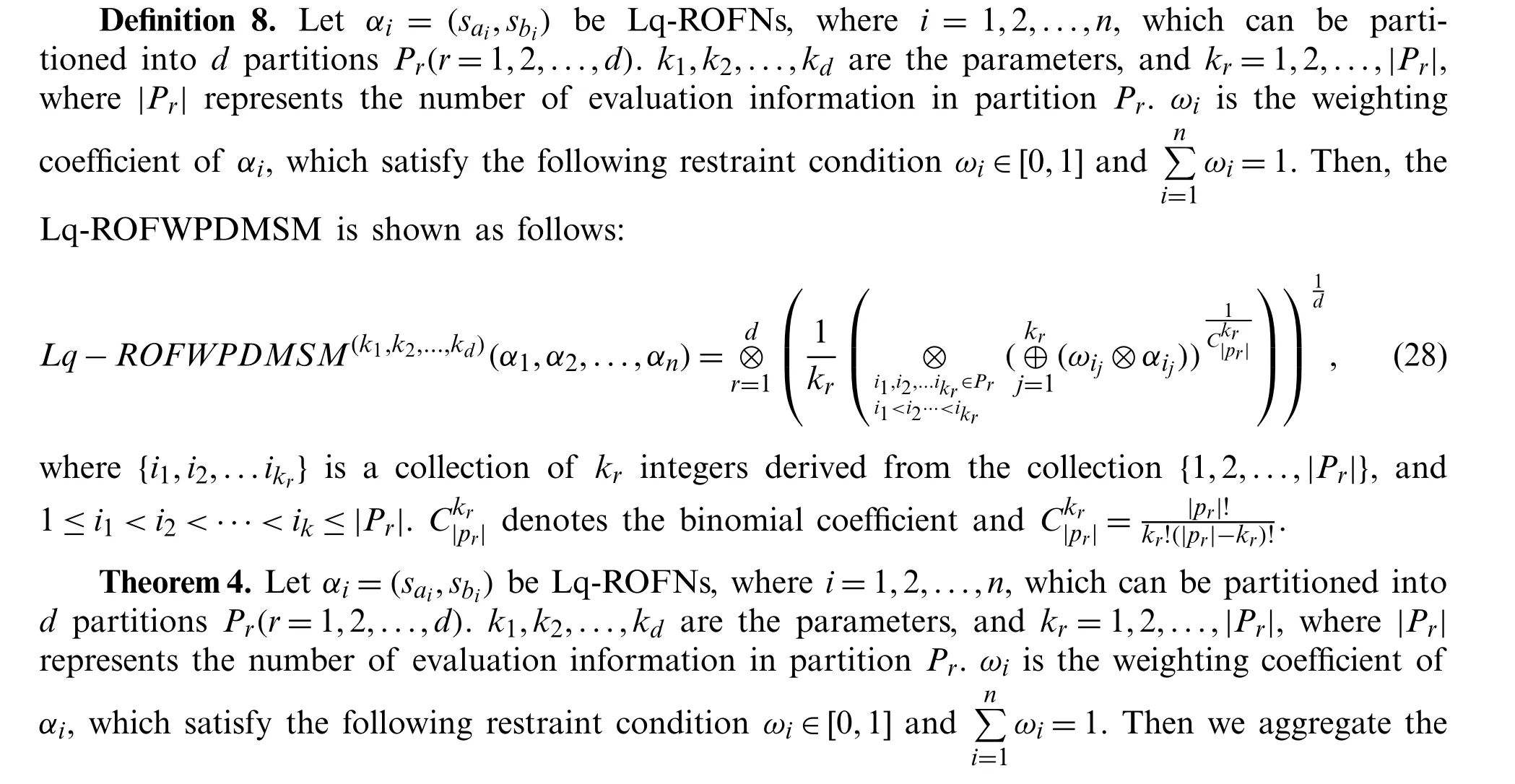
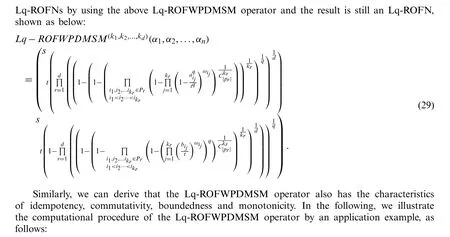
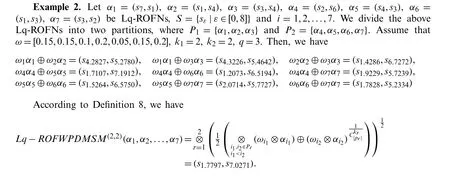
6 Model for MADM Method Using the Proposed Operators

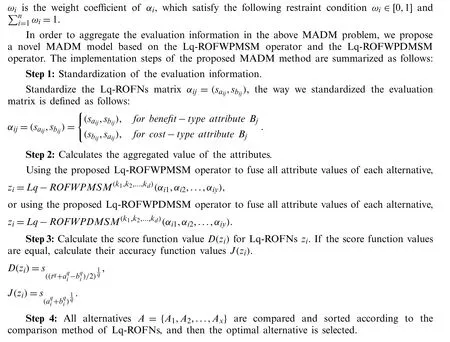
7 Application Example and Comparative Analysis
In this section,the proposed MADM model is applied to solve the siting problem of medical waste treatment stations.Then the effect of the variation of parameter values on the aggregation results is discussed.Finally,the proposed method is compared with the previous methods.
7.1 Illustrative Example
Example 3.Suppose there are four alternativesAi(i=1,2,3,4)for medical waste treatment stations with seven attributes:geological conditions(B1),hydrological conditions(B2),topographic conditions(B3),transportation distance(B4),service radius(B5),protection distance(B6),and public opinion(B7).ω=(0.2,0.1,0.15,0.25,0.1,0.15,0.05)is the weight array of attributeBi(i=1,2,...,7).The experts evaluated the four stations based on the above seven attributes by taking the form of Lq-ROFNs,and the decision matrix is detailed in Tab.1.According to the semantic interpretation of attributes,all attributes can be divided into two groupsP1={B1,B2,B3} andP2={B4,B5,B6,B7}.P1andP2denote natural factors and public facilities,respectively.According to the intrinsic correlation among attributes,there is an association between any two attributes in the same partition,i.e.,k1=2,k2=2.Assume the parameter q = 3.

Table 1:The evaluation matrix of Example 3
Step 1:Standardization of the evaluation information.
Accordingto the description of the attributesBi(i=1,2,...,7),they are all benefit types.Therefore,there is no need to standardize the evaluation matrix.
Step 2:Calculates the aggregated value of the attributes.
Using the proposed Lq-ROFWPMSM operator to fuse all attribute values of each alternative station,
z1=(s1.7711,s6.9002),z2=(s1.3969,s6.6682),z3=(s1.6942,s6.8171),z4=(s1.6976,s6.4000),
or using the proposed Lq-ROFWPDMSM operator to fuse all attribute values of each alternative station,
z1=(s1.4432,s6.9109),z2=(s1.3682,s6.6068),z3=(s1.4586,s6.8061),z4=(s1.6986,s6.3926).
Step 3:Get the results of the score function of LqROFNszi.
The value of the score function of Lq-ROFWPMSM is
D(z1)=s4.5550,D(z2)=s4.7785,D(z3)=s4.6420,D(z4)=s5.0315,
The value of the score function of Lq-ROFWPDMSM is
D(z1)=s4.5220,D(z2)=s4.8358,D(z3)=s4.6402,D(z4)=s5.0375
Step 4:Choose the optimal alternative station.
The ranking result of medical waste treatment stations obtained using the Lq-ROFWPMSM operator and the Lq-ROFWPDMSM operator isA4≻A2≻A3≻A1,where the symbol “≻”means“preferred to”.Therefore,the most suitable site for a medical waste treatment station isA4.
7.2 Influence of Parameters Change on Ranking Results
(1)The influence on ranking results whenqchanges.
We will use Example 3 to analyze the effect on the sorting order when the parameterqis changed.As the value ofqchanges,the arrangement obtained with the proposed method are shown in Figs.1 and 2(Suppose the parameterk1= 2,k2= 2).
From Figs.2 and 3 we can obtain the following information:although the value of the parameterqchanges,the arrangements of the alternatives obtained with the proposed method keep unchanged,i.e.,A4≻A2≻A3≻A1.Further,we can know that the score values of the alternatives increased monotonously with the value of the parameterqincreased.While the optimal station is always constant,so the parameterqis robust.
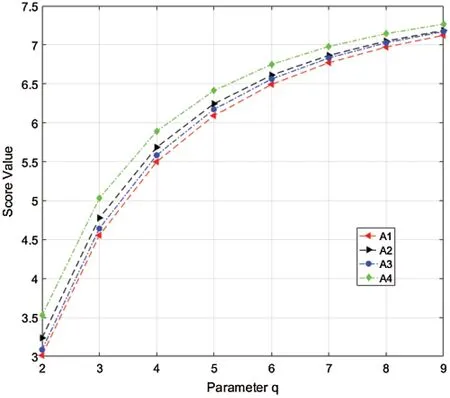
Figure 2:Score values calculated by the Lq-ROFWPMSM operator

Figure 3:Score values calculated by the Lq-ROFWPDMSM operator
(2)The influence on ranking results when the parametersk1andk2changes.
We will use Example 3 to analyze the effect on the ranking results when the parametersk1andk2are changed.As the values of parametersk1andk2change,the ranking obtained with the proposed method are shown in Tabs.2 and 3(Suppose the parameterq=3).
From Tabs.2 and 3,we can obtain the following information:
(1)Whenk1=1,whetherk2=1 ork2=2,the sorting of the alternatives calculated by the Lq-ROFWPMSM operator is:A4≻A2≻A1≻A3.
(2)Whenk1=2,whetherk2=1 ork2=2,the sorting of the alternatives calculated by the Lq-ROFWPMSM operator is:A4≻A2≻A3≻A1.
(3)Regardless of the change in the values ofk1andk2,the arrangement of the alternatives calculated by the Lq-ROFWPDMSM operator is:A4≻A2≻A3≻A1.

Table 2:Ranking results of Lq-ROFWPMSM operator of the parameter k
Obviously,the arrangements calculated by our proposed MADM approach may change whenk1andk2takes different values,but the optimal station is always consistent,i.e.,A4.By comparative analysis,the ranking results changes slightly as the parametersk1andk2change,but the optimal station keep unchanged.The reason is that as the value ofk1andk2change,the relationship structure of the attributes also changes.Therefore,the decision-maker can model any relationship among attributes by setting the appropriate values ofk1andk2.

Table 3:Ranking results of Lq-ROFWPDMSM operator of the parameter k
7.3 Verification and Comparative
In this section,we apply the previous MADM methods to solve the medical waste treatment station selection problem in Example 3.The effectiveness and superiority of the proposed MADM method(Suppose the parameterq=3,k1=2,k2=2)is verified through comparative analysis.The ranking results obtained by the above method are shown in Tab.4.
It is obvious from Tab.4 that there are some differences between the rankings obtained by the above approaches,but the optimal alternative is the same,i.e.,A4.Thus,the usability and reliability of the proposed MADM model is verified.Next,we will further illustrate the superiority of the proposed MADM approach by a new example.
Example 4.Suppose there are four alternativesAi(i=1,2,3,4)for medical waste treatment stations with seven attributes:geological conditions(B1),hydrological conditions(B2),topographic conditions(B3),transportation distance(B4),service radius(B5),protection distance(B6),and public opinion(B7).ω=(0.3,0.15,0.05,0.1,0.15,0.15,0.1)is the weight array of attributeBi(i=1,2,...,7).The experts evaluated the four stations based on the above seven attributes by taking the form of Lq-ROFNs,and the decision matrix is detailed in Tab.5.According to the semantic interpretation of attributes,all attributes can be divided into two partitionsP1={B1,B2,B3}andP2={B4,B5,B6,B7}.P1andP2denote natural factors and public facilities,respectively.According to the intrinsic correlation among attributes,there is an association between any two attributes in the same partition,i.e.,k1=2,k2=2.Assume the parameterq= 3.

Table 4:Arrangements by different approaches in Example 3

Table 5:The evaluation matrix of Example 4
Using the above method to process the evaluation information in Example 4,the ranking results were obtained as shown in Tab.6.

Table 6:The sorting obtained using different methods in Example 4
From Tab.6,we can know that the ranking results obtained by the proposed method are significantly different from those obtained by the previous methods.Then,we compare the ranking results in detail and analyze the main reasons for the differences.
(1)The rankings obtained by our proposed approach using the Lq-ROFWPMSM operator and the Lq-ROFWPDMSM operator are bothA4≻A3≻A1≻A2.While the arrangement obtained by Liu et al.’s model using the WLIFMSM operator and the WLIFDMSM operator[40]are bothA3≻A4≻A1≻A2.The reason is that our method considers the interrelationship among attributes in the process of aggregation and partitioning of attributes.The proposed method can handle the case where attributes need to be grouped into different clusters.Obviously,partition is required between the attributes of the medical waste treatment stations in Example 4.While Liu et al.’s model[40]cannot handle the case where partition exists between attributes.Therefore,the proposed method can express the relationship among attributes more accurately than Liu et al.’s method.
(2)The ranking obtained by our proposed method is the same,both areA4≻A3≻A1≻A2.While the sorting obtained by Lin et al.’s approach using the LqROFWA operator isA3≻A4≻A2≻A1and the sorting result obtained using the LqROFWG operator[31]isA3≻A4≻A1≻A2.The reason for the above differences is that unreasonable values in attributes or weights will have a significant impact on the LqROFWA or LqROFWG operators[31].Meanwhile,the LqROFWA operator or LqROFWG operator[31]does not consider the effect of partitioning and correlation among attributes on the sorting results.In Example 4,partitioning of attributes is required according to the intrinsic relationship among attributes,and there is correlation among attributes in the same partition.Therefore,the proposed MADM model is more reasonable than the approach of Lin et al.[31].
(3)It can be seen from Tab.6 that the rankings obtained by Liu et al.’s method using the LPBM operator[42]and our proposed MADM approach are significantly different.Both Liu et al.’s model[42]and our proposed model share a common premise that attributes need to be partitioned into several independent partitions.However,Liu et al.’s approach[42]can only capture the association between attributes in the same partition,while our approach can capture the relationship among attributes.In Example 4,three attributesB1,B2,B3are relevant to each other and four attributesB4,B5,B6,B7are related to each other.By changing the values of the corresponding parameters,the proposed method can handle not only the case of interconnection between attributes,but also the case of interconnection among attributes.Therefore,our approach is more general and realistic than Liu et al.’s MADM method[42]in solving the MADM problems.
The purpose of the medical waste treatment station is to treat medical waste in a timely manner to avoid hazardous discharges and environmental pollution.The management insights of this study are mainly to facilitate the decision of site selection.In many cases,the selection of a suitable station for medical waste treatment seems to be inevitable.Station selection involves multiple attributes of the alternatives[43].The attributes may be interrelated or independent of each other.Meanwhile,the evaluation information given by the decision maker may contain unreasonable values due to the lack of knowledge about the evaluation object[44].The proposed MADM method using the Lq-ROFWPMSM operator and the Lq-ROFWPDMSM operator can effectively solve the above problems.However,the proposed method also has limitations.When there is no partition between attributes,the proposed method may not be a suitable choice.The reason is that in order to deal with the complex relationships among attributes,the proposed method increases the computational complexity significantly.
8 Conclusions
This paper proposes a novel MADM method based on linguistic q-rung orthopair fuzzy numbers to solve the medical waste treatment stations selection problem.The PMSM operator can effectively handle MADM problems in which attributes in the same cluster are closely related,while attributes in different clusters are not related.Therefore,we extend the PMSM operator to process Lq-ROFNs and propose the Lq-ROFPMSM operator and its corresponding weighted form(Lq-ROFWPMSM).Then,to reduce the adverse effects of unreasonable values in the evaluation information on the final decision results,we propose the Lq-ROFPDMSM operator and the Lq-ROFWPDMSM operator.Meanwhile,we analyze the corresponding properties and theorems of the above operators and give some special cases.In addition,a novel MADM method is proposed for the siting of medical waste treatment stations,and the steps to implement the method are given.The main features of the proposed MADM method include:(1)it can handle the case where partitions exist among attributes;(2)it can handle complex relationships among attributes;(3)it can reduce the adverse effects of inappropriate values in the evaluation information on the final ranking results.Then,the feasibility of the proposed method is verified by an application example,and the effect of parameter variation on the ranking is analyzed.Finally,the reliability and superiority of the method are verified by comparing it with previous methods.However,when there is no partitioning between the attributes of the evaluation alternatives,the proposed approach may not be an appropriate choice.In the next step,we will use the developed MADM method to provide solutions for many fields,such as technology selection,environmental assessment,energy management,etc.
Data Availability:The data used to support the findings of this study are included within the article.
Funding Statement:This research work was supported by the National Natural Science Foundation of China under Grant No.U1805263.
Conflicts of Interest:The authors declare that they have no conflicts of interest to report regarding the present study.
杂志排行
Computer Modeling In Engineering&Sciences的其它文章
- Data-Driven Determinant-Based Greedy Under/Oversampling Vector Sensor Placement
- Predicting Genotype Information Related to COVID-19 for Molecular Mechanism Based on Computational Methods
- A Novel Named Entity Recognition Scheme for Steel E-Commerce Platforms Using a Lite BERT
- Deep Learning Applications for COVID-19 Analysis:A State-of-the-Art Survey
- Simulating the Effect of Temperature Gradient on Grain Growth of 6061-T6 Aluminum Alloy via Monte Carlo Potts Algorithm
- A Reliability Evaluation Method for Intermittent Jointed Rock Slope Based on Evolutionary Support Vector Machine
